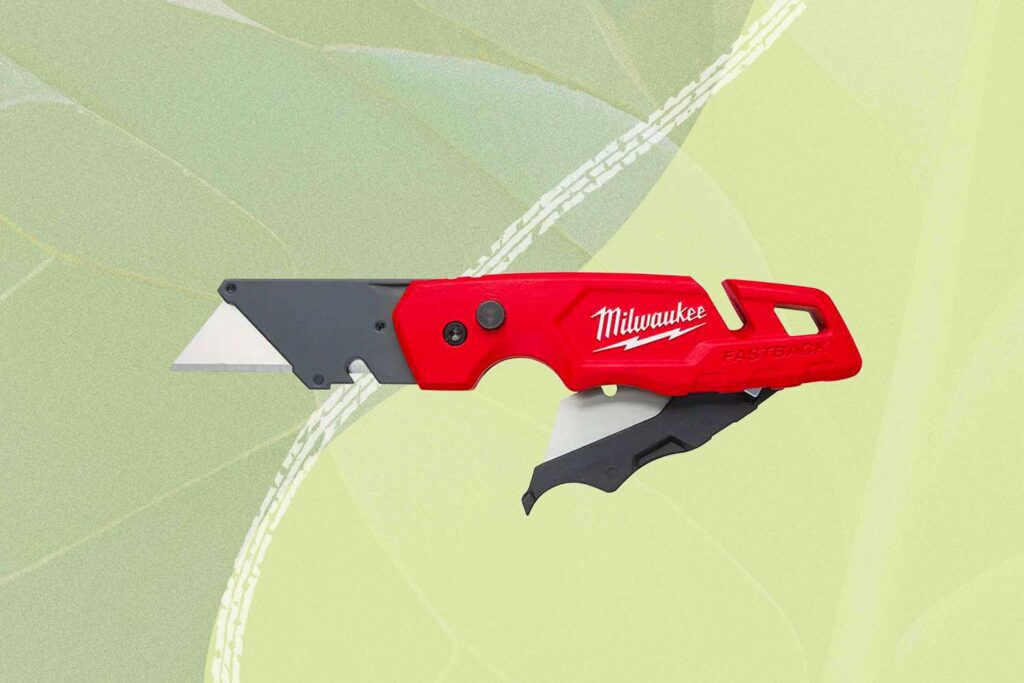Introduction
Utility knives are versatile cutting tools that have found their place in various industries and households. With their sharp blades and ergonomic designs, they offer convenience and efficiency in numerous cutting tasks. In this article, we will explore the history, types, features, applications, safety measures, and tips for choosing and using utility knives effectively.
The History of Utility Knives
Utility knives have a rich history dating back centuries. The concept of a knife with a replaceable blade originated in the late 19th century when the need for a versatile cutting tool became apparent. Over time, utility Knives evolved and gained popularity due to their practicality and efficiency. Today, they are essential tools in many professional trades and DIY projects.
Types of Utility Knives
Fixed-Blade Utility Knives
Fixed-blade utility knives are robust and sturdy, with a blade that remains fixed in place. They are known for their durability and reliability, making them ideal for heavy-duty tasks. These knives often feature a retractable blade for safety when not in use.
Folding Utility Knives
Folding utility knives, as the name suggests, have a blade that folds into the handle when not in use. This design provides convenience and portability, making them popular among professionals and outdoor enthusiasts. Folding utility knives often have additional features like belt clips and blade locking mechanisms.
Features and Components
Blade Materials
Utility knife blades are typically made from stainless steel, carbon steel, or high-carbon steel. Stainless steel blades are resistant to corrosion, while carbon steel blades offer excellent sharpness and edge retention. High-carbon steel blades combine the benefits of both materials.
Handle Design
The handle of a utility knife should provide a comfortable and secure grip scissors. Common materials for handles include plastic, rubber, and metal. Ergonomic designs with textured grips ensure better control and reduce the risk of slippage during cutting tasks.
Locking Mechanisms
Many utility knives feature locking mechanisms to keep the blade securely in place during use. Liner locks, frame locks, and lockback systems are some popular options. These mechanisms prevent accidental blade closure and enhance user safety.
Applications and Uses
Home Improvement Projects
Utility knives are invaluable tools for home improvement projects. They can be used for tasks such as cutting drywall, opening boxes, trimming carpet, and more. Their versatility makes them a must-have tool for DIY enthusiasts.
Craft and Hobby Work
Crafters and hobbyists benefit from the precision and maneuverability of utility knives. Whether it’s precise paper cutting, model making, or fabric trimming, these knives provide the control and accuracy required for intricate work.
Outdoor Activities
From camping to fishing, utility knives prove their worth in outdoor activities. They can help with cutting ropes, preparing food, clearing branches, and various other tasks. Their compact size and portability make them an essential companion for adventurers.
Professional Applications
Utility knives find extensive use in various professional industries such as construction, electrical work, plumbing, and more. Their ability to handle a wide range of cutting tasks makes them indispensable for professionals who require reliability and precision.
Safety Measures
Proper Handling and Grip
When using a utility knife, it is crucial to maintain a firm grip on the handle and keep your fingers away from the blade. Always cut away from your body and ensure a stable working surface. Proper handling reduces the risk of accidents and injuries.
Blade Maintenance and Replacement
Regular blade maintenance is necessary to ensure optimal performance. Keep the blade clean and lubricated, and replace it when it becomes dull or damaged. Dull blades can lead to accidents due to increased force required for cutting.
Storage and Transportation
When not in use, store utility knives in a safe and secure place. Consider using blade guards or sheaths to protect the blade and prevent accidental cuts. During transportation, make sure the knife is securely stored to avoid any mishaps.
Choosing the Right Utility Knife
Consider the Purpose
Determine the primary purpose of the utility knife before making a purchase. Different tasks may require different blade lengths, handle designs, or locking mechanisms. Understanding your needs will help you select the most suitable option.
Blade Length and Thickness
Blade length and thickness are important factors to consider. Longer blades are useful for cutting larger materials, while shorter blades offer increased maneuverability for intricate work. The thickness of the blade contributes to its durability and cutting performance.
Ergonomics and Comfort
A utility knife should feel comfortable in your hand for extended periods. Consider the handle design, grip texture, and overall ergonomics. Test the knife if possible to ensure a secure and comfortable grip.
Budget-Friendly Options
Utility knives are available in a wide price range. Consider your budget and look for options that offer good quality and durability within your price range. There are affordable choices that still provide reliable performance.
Tips for Effective Utility Knife Usage
Precision Cutting Techniques
To achieve precise cuts, practice controlled movements and steady pressure. Start with light strokes and gradually increase the force if needed. Always follow proper cutting techniques to ensure accuracy and avoid accidental slips.
Making Clean Cuts
To make clean cuts, ensure the blade is sharp and properly maintained. Apply consistent pressure while cutting and let the blade do the work. Avoid forcing the blade through materials, as this can result in jagged or uneven cuts.
Safety Precautions
Prioritize safety by wearing protective gloves and eyewear when using a utility knife. Keep your fingers away from the blade’s path and avoid distractions during cutting tasks. Always work in a well-lit area and maintain a clean and clutter-free workspace.


